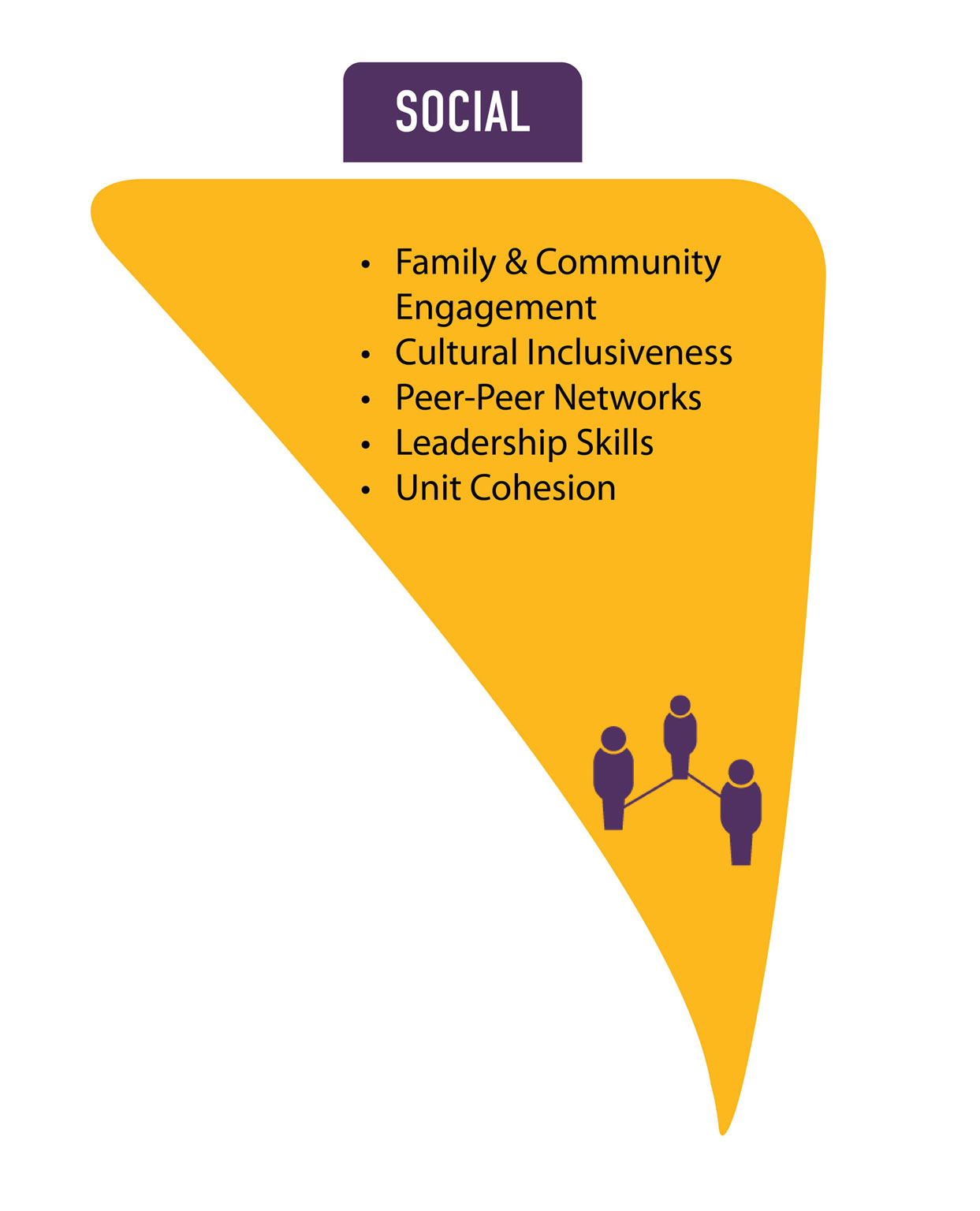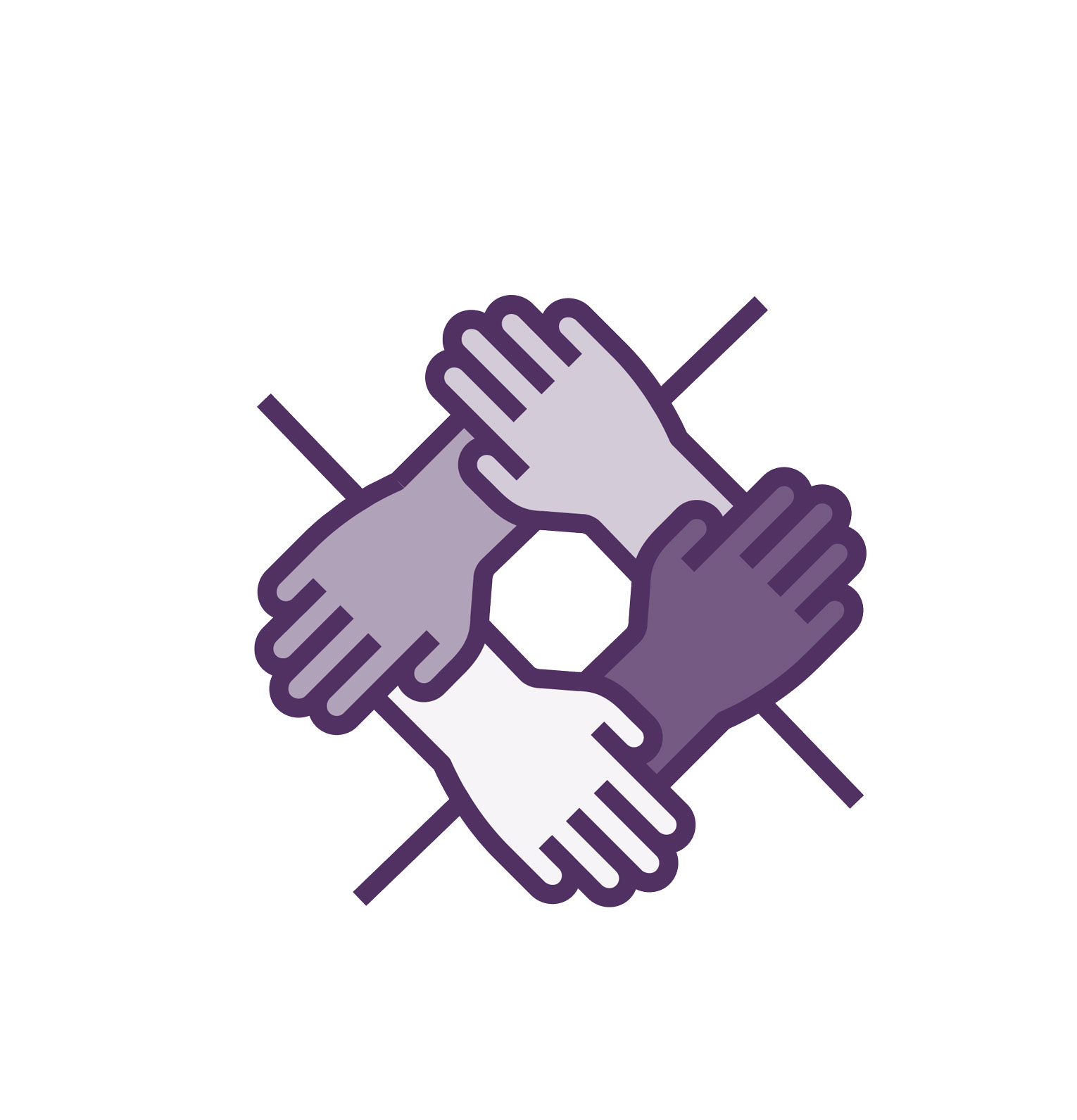 The nature of your relationships with others has a big impact on your physical, mental, and emotional health—which all affect performance. “Social fitness” is a term used to describe and assess the health of your personal and professional relationships in and out of the military. When all aspects of your social network are strong and you feel connected to others, you’ll be better able to face the challenges of service and life in a military family while building resilience along the way.
The nature of your relationships with others has a big impact on your physical, mental, and emotional health—which all affect performance. “Social fitness” is a term used to describe and assess the health of your personal and professional relationships in and out of the military. When all aspects of your social network are strong and you feel connected to others, you’ll be better able to face the challenges of service and life in a military family while building resilience along the way.
Social fitness is also one of the primary domains of Total Force Fitness (TFF)—a framework that members of the military community use to achieve holistic health, readiness, and Human Performance Optimization. To start working on your social fitness, think about the different interpersonal areas that might need some focused attention. Just like you would train different muscle groups, it’s important to consider (and work on) all of your different relationships and how they impact your well-being and ability to perform at your best.
Although relationships are two-sided, keep in mind that your job is to focus on what you put into the equation. Consider how you regulate and manage your emotions, moderate your responses, express your values, and the general communication skills you practice with others.
 Family engagement
Family engagement
Whether it’s your spouse or partner, children, parents, siblings, extended family, or others, the relationships you have with those you call “family” are often quite important. Your family experiences (past and present) affect who you are, how you interact with others, and how well you can perform in different contexts— regardless of whether your relationships are close, distant, smooth, or rocky.
- The family you grew up with. From how you deal with conflict, to how you manage your finances, to how you cope with stress, the emotional and interpersonal skills you learned growing up likely impact your ability to relate to others and perform on duty. As an adult, optimizing this area of social fitness is about understanding the influences that make you, you—and then, taking conscious control of what you want to change. It’s also about coming to a place of acceptance of, if not closeness with, those who helped shape who you are.
- The family you build. Likely your partner and children (and maybe others)—the people you live with, share a home with, and call your family—also share the military experience with you. Families need as much support as the Service Member because being part of a military family isn’t always easy. Frequent moves, school changes, and separations can strain relationships and stress both the Service Member and their relatives. The good news is that being a part of a military family also fosters resilience. Social fitness in this area is about making sure you encourage that resilience and maintain military life balance, so your family relationships give you strength and support rather than distract you from duty.
- Military couple relationships. Like families, military spouses and partners serve too. But couple relationships are often affected by military service in more, and other, ways. For example, couples likely have to address finances, make certain legal arrangements, and navigate recovery from illness and injury together. It can also be a challenge to maintain intimacy and share parenting through separations. Still, a socially fit couple focuses on solving problems together and using respectful and empathetic communication to work through the tough stuff as a team. With strong support on the home front, Service Members can focus on getting the job done.
 Need more ideas for staying close when far apart? Read More
Need more ideas for staying close when far apart? Read More
 Community involvement
Community involvement
Personal relationships are a crucial part of your social fitness, and the relationships you build with your community and organizations within your community are just as important. The idea of a community can be broad and based around location, interests, membership (for instance, to the military), or other shared aspects of identity. Whether it’s through volunteering, doing advocacy work, or sharing a hobby, your integration, participation, and involvement with your community can impact your health and performance.
Service Members who are more engaged in their communities tend to be healthier and even might live longer. And military families who are involved with their communities experience more support and are better able to cope with the challenges of military life, which ultimately might increase retention. Getting involved can help you and your family know what resources are out there, and attending community or group events can give you more chances to build personal, emotionally-interconnected relationships with those you can identify with.
 Cultural inclusiveness
Cultural inclusiveness
Most meaningful and productive relationships with others, particularly team members and friends, require a mutual understanding and acceptance of background. Getting to know someone’s background helps you build closeness through familiarity and even the sharing of vulnerabilities. Acceptance of the identities of others is a base for a socially fit relationship. Though it’s not always easy to show appreciation for what you don’t directly relate to, it’s important to slow down, check your own biases, and practice empathy.
In a team setting, leveraging differences (of thought, values, religion, race, ethnicity, or even experience) can actually help you solve problems and complete tasks more creatively. During your military career, you’ll likely travel and encounter people from various nationalities all across the world. As a Service Member and leader, your mission success might rely on your ability to interface and build relationships with foreign communities and practice cultural competency there and with your teammates.
 Peer-peer networks
Peer-peer networks
It takes all kinds of relationships to build a healthy social-support system. It can be easy to forget or take for granted your relationships with friends, colleagues, neighbors, and even acquaintances. But an important part of becoming socially fit is recognizing how even the simplest relationships support your well-being. And while what first comes to mind might be those super close friends—the ones who you can really open up to—peer relationships are about so much more than that.
Consider the different types of friendships you might have. For example, you might only connect with some people once or twice a year, or just casually hang out with others because you enjoy a certain activity (such as a sport or hobby). Think of the people in your life who are more like acquaintances such as the clerk at your local coffee shop. Maybe it’s the other mom or dad who drops their kid off at school the same time as you every morning, or it’s the person who’s always at the gym when you’re there. Those are all people in your social network, and interactions with them (even small ones like a simple “Hi, how are you?”) help you feel connected. Building social fitness in this area is really about recognizing all the people who are already in your life that you might not have first considered as social supports. And it’s about assessing your relationships to really grow your support network.
 Leadership skills
Leadership skills
One of the defining factors of the military is the respect for rank and the chain of command. Whether you’re engaging with your leaders or command networks, or working in a position of leadership, it’s important to communicate professionally, clearly, respectfully, and in a way that builds trust across the ranks. Social fitness in this area is about knowing how to relate to others in a way that gets the job done and keeps everyone on task and committed to the mission.
It takes strong interpersonal skills to build cohesion, motivate others, and keep team members engaged—all of which makes high-performing teams. To rise in the ranks, you have to show those skills as well. As a leader, you have to be able to read your subordinates, understand what matters to them, and know them well enough to notice when they need additional support (on duty or at home). You need to be able to recognize the same things within yourself as well—and speak with your command unit about it too.
 Unit cohesion
Unit cohesion
There are two ways to understand what it means to be a “cohesive” team. First, there’s task cohesion—or how well a group of people come together to complete a mission or achieve a goal. It requires shared commitment to the objective and cooperation to do what it takes to complete the task. But cohesion isn’t only about completing the mission, especially when it comes to cohesion as an aspect of social fitness.
The second piece of “cohesion” is social cohesion—the ties you have with teammates. That feeling of connection and the bond you have with others actually help your team achieve task cohesion and perform well as a group. What’s more is that healthy supportive relationships with your team make it easier to navigate stress and even trauma. But team cohesion doesn’t come easily. Like other relationships, building closeness with your team is something you have to work towards. It starts with building personal trust and sharing part of who you are with others. It can be hard to be vulnerable, but opening up to others can make it easier to communicate, work together, and be more effective on duty.




